...
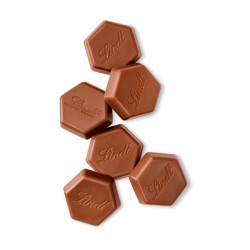

The sunny weather not only brings the first spring fever, but Easter is also just around the corner. To make sure your Easter is perfect, you can't do without a chocolate Easter bunny. In the meantime, you can find a large selection of different Easter bunnies in the supermarket, but there's nothing like a self-made chocolate bunny. In this article we will show you how to make your own chocolate Easter bunny. The best thing about making your own is that you can really decorate the bunny individually.
Ingredients:
Tempered dark couverture
Tempered white couverture
Tempered milk couverture
It is simply very important that you use tempered couverture. Don't know how to temper couverture correctly? This blog post will explain it all to you!
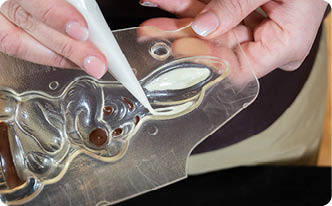
The most important thing when casting figures is that you polish the mould really well at the beginning so that the finished Easter bunny shines really nicely at the end. For polishing, it is best to take a paper towel and clean every part of the mould. Make sure that you get into the recesses so that they are also polished well. Now fill a cornet with tempered dark couverture, cut off a small tip and paint all the areas with the chocolate that you want to darken. Always remember that the Easter bunny has a front and a back. Important: Paint the pupils of the figure first. People often forget that the make-up of such a figure is based on a layer system and then first the eye is filled with white couverture and afterwards the pupil is painted. But this is wrong, because you don't see the pupil at all. You build up from the outside to the inside. Once you have filled all the areas of the mould that you want to be dark with dark couverture, let it dry for a short time. Wait about 5 minutes. Turn the bunny mould over from time to time to make sure that you have coloured everything in properly, otherwise the colour of the chocolate that you will use to pour the final chocolate bunny will show through later. Depending on the couverture you use, this may look less attractive.
Here's how:
Once the chocolate is set, you can now colour in the light areas of your Easter bunny with the white couverture. Again, use a cornet with a small opening. Now you can also colour in the eye, as the pupil has already been painted. In this case it is also important that the bottom layer is already dry, otherwise it would melt and your self-made figure would no longer have a pupil. Again, fill in all areas and let this layer dry as well.
If you want to colour parts of your bunny, now is the right time. Melt about 1 teaspoon of cocoa butter carefully over a water bath. Do not heat the cocoa butter to more than 40 °C. The cocoa butter does not need to be tempered, as the amount is so small that it has no influence on the tempered couverture. Now pour fat-soluble powder colouring into a bowl. Depending on how intense you want the colouring to be, you may have to use more or less powder. Now add the liquid cocoa butter to the powder colour in the bowl and stir until all the colour pigments have dissolved. Now you can add tempered white couverture and homogenise the mixture. Now fill in all the areas you want to have coloured with the cornet.

Ingredients:
Tempered couverture
It is very important that you use tempered couverture. It doesn't matter whether you use white, dark or milk couverture. Use the couverture that tastes best to you. You don't know how to temper couverture correctly? This blog post will explain everything to you!

Then take a silicone brush (we advise against using hair brushes, as they tend to lose hair and contaminate your bunny figure) and brush the mould with tempered milk couverture. It is sufficient to paint only a very thin layer, the main purpose is to avoid air pockets. Also brush over the areas of the figure that have already been painted. Once you have painted and brushed both halves of the Easter bunny, you can now use a metal horn to clean the edges of the figure. This step is very important because if you don't clean your mould properly, you may have problems or unsightly edges when you remove the homemade chocolate figure. Once you have removed the excess couverture from your mould, you can assemble it. Add a clamp to each side and a clamp to the top. The clamps are a little difficult to put on, but they make sure that the shapes stick together well.



Now hold the mould at a slight angle above your tempering device, take a ladle and fill the bunny mould completely with the tempered couverture. Now tap the back of a spatula against the mould so that all the air bubbles rise to the top and the couverture is well and evenly distributed. Then turn the mould upside down and let all the chocolate run out of the Easter bunny mould again. Again, tap the mould so that the excess chocolate flows out and the walls of the chocolate figure are not too thick. Once the chocolate has flowed out, you can now run a spatula over the bottom of the edge to clean it and then put the mould in the fridge for about 5 minutes.



After the short cooling period, place a piece of baking paper on a cake tray and pour about a ladleful of tempered couverture onto it and spread it evenly with a spatula. Rub the palm of your hand 2-3 times over the bottom edge of the homemade bunny to warm the chocolate slightly and then place it on the just-smoothed couverture surface. Warming by hand is important as it helps the chocolate in the mould to bond better with the fresh surface, giving you a secure bond to the base that is sure not to fall off.


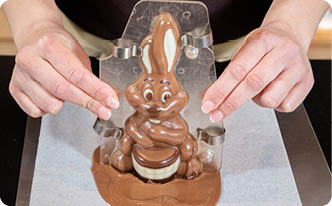
Place the mould in the fridge for another 5 minutes. After this time, be sure to remove the clamps and put the mould back in the fridge for at least 20 minutes. If you don't remove the clamps, there will be too much pressure on the mould and it could happen that your hard-earned Easter bunny breaks in the mould.
After the 20 minutes cooling time, you can now take your self-made Easter bunny out of the fridge. Rock the mould very slightly, this will release the excess chocolate from the bottom surface and you will only have the chocolate where your mould is. Now carefully drive a spatula into the edge of the chocolate mould and go around once. During this process, air will get into the mould and your homemade chocolate mould will almost release itself from the mould. All you have to do now is carefully pull one half of the mould backwards and then the other half. Would you like to do this with your child or would you like to see it live before you cast figures yourself at home? Then simply visit our Easter bunny casting course. Click here for our Easter bunny casting courses:

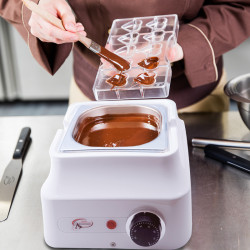
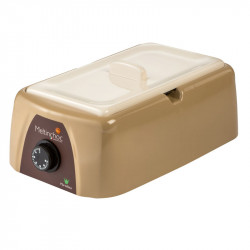
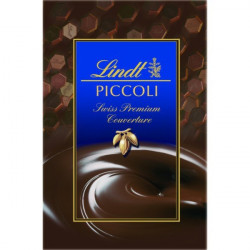
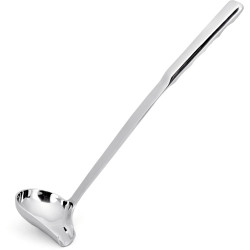

If you now want to colour or sprinkle colour on pralines or chocolate bars, for example, or decorate them, we recommend using cocoa butter that has already been coloured. This has the advantage that it simply needs to be placed in warm water for a short time and is then immediately ready for use. The cocoa butter becomes very liquid and is therefore ideal for creating colourful sprinkles on moulds or for painting praline moulds. However, this liquid consistency can be your downfall when working with chocolate figures. If you try to paint the chocolate mould with a brush, the colour may run down and mix with your previous work, thus "soiling" it.
Therefore, we recommend that you use fat-soluble powder paint when making your own chocolate figures. This is almost as viscous as pure couverture due to the added couverture and also ensures a colourful result thanks to the additional cocoa butter. For praline creations or chocolate bars, we would advise you not to use this colouring method, as you will not be able to create fine sprinkles due to the consistency z.B..Colour gradients are also more difficult to create with this method and it is completely unsuitable for the airbrush method.
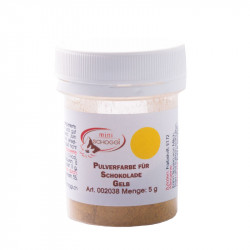
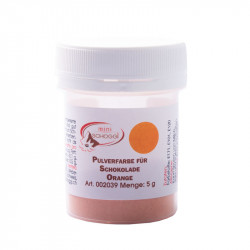
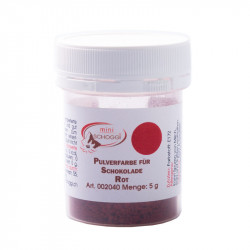
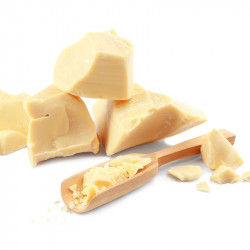
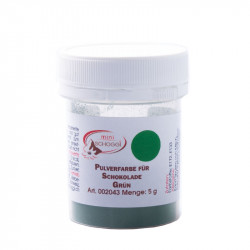
Beautiful and high-quality figurine moulds for making your own chocolate figurines are absolutely essential for making Easter bunnies. This applies in general to all chocolate products that are poured. Never use silicone moulds for figurines, chocolates, chocolate bars and other chocolate products. Silicone moulds will never give you the beautiful shine that you get from a polycarbonate mould. Furthermore, silicone moulds are not stable enough and the chocolate products may come out deformed in the end. Use silicone moulds for baking and for desserts that need to be frozen.
When making your own chocolate figures, use only metal and plastic moulds that are in perfect condition. Every scratch and every rusty or non-galvanised spot has a negative effect on the appearance of the cast piece. If your moulds show chocolate residues, please never loosen them with a hard or pointed object, but rather with warm water. This is the only way to keep the moulds in good condition for a long time.
In order for the casting to be done quickly and without effort, the mould must be well prepared. Wash the moulds in warm soapy water and then rinse them thoroughly with warm water. Then rub the moulds completely with a dry cloth until no more moisture residue is visible. Finally, polish the mould with clean cotton wool or kitchen paper to give your chocolate product a nice shine.
Please use only couverture when moulding your own chocolate products. This is of a higher quality, has a better taste and, above all, is thinner, which is extremely important for making figure moulds yourself. In our online shop we offer a variety of high quality couvertures. It is also important that you always temper the couvertures beforehand, because without tempering the mould does not get its shine, becomes grey or you cannot remove it from the mould at all. Read our blog post to find out how to temper couvertures correctly. Or visit our couverture tempering course.
Most of the time, chocolate only sticks in the mould if it has not been tempered correctly. Therefore, make a tempering test before each chocolate product.
Furthermore, such a chocolate mould needs sufficient time in the refrigerator to cool down completely. If you have taken the mould out too early, simply chill it for another 10 minutes.

 Make your own decor roulade
Make your own decor roulade
 Cinnamon star recipe
Cinnamon star recipe
 Correctly temper couverture and chocolate
Correctly temper couverture and chocolate
 Making Halloween chocolates
Making Halloween chocolates
 Cake Recipes Convert
Cake Recipes Convert
Leave a comment